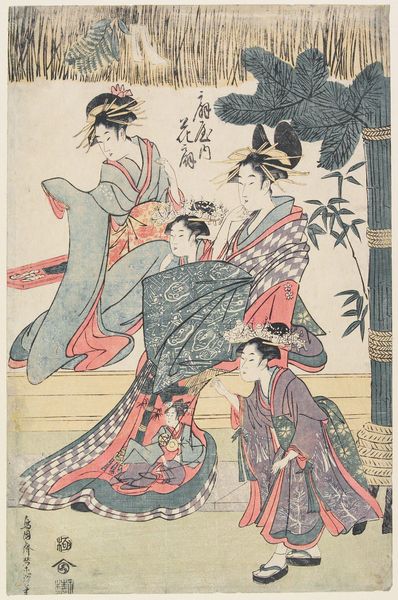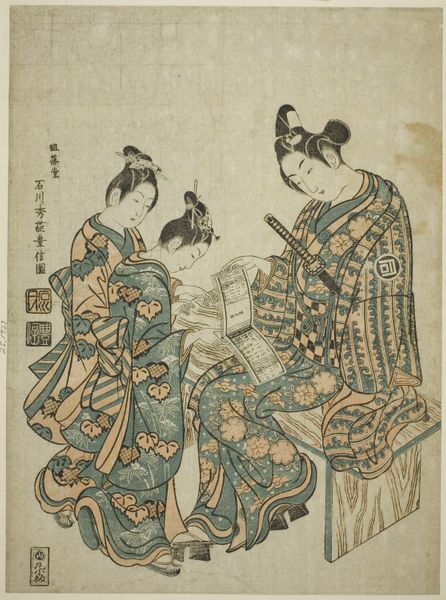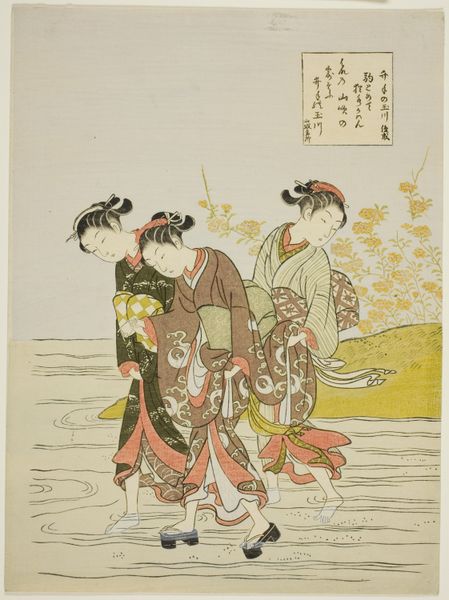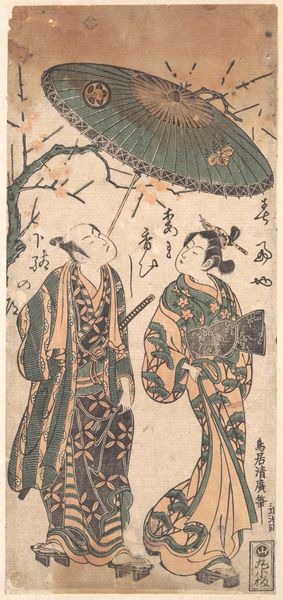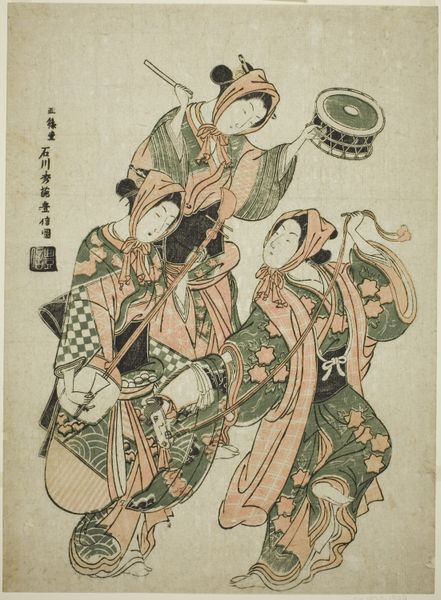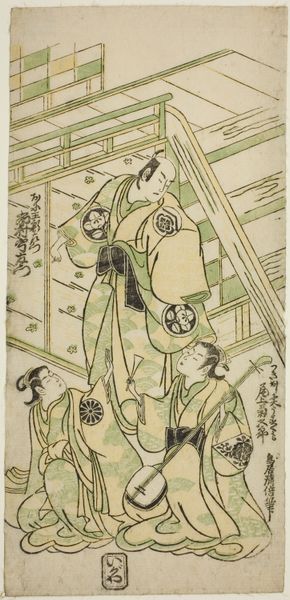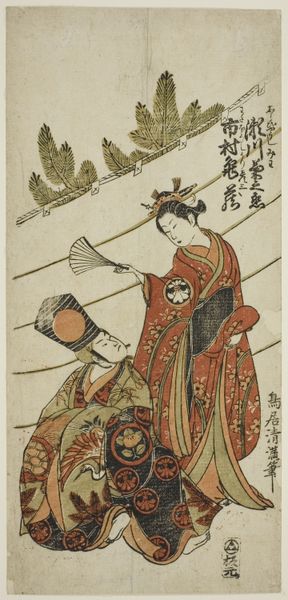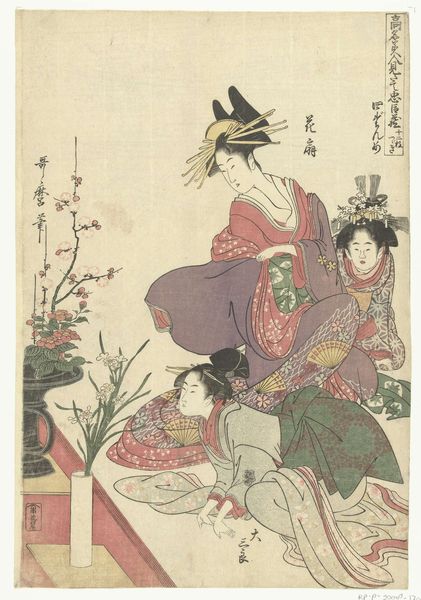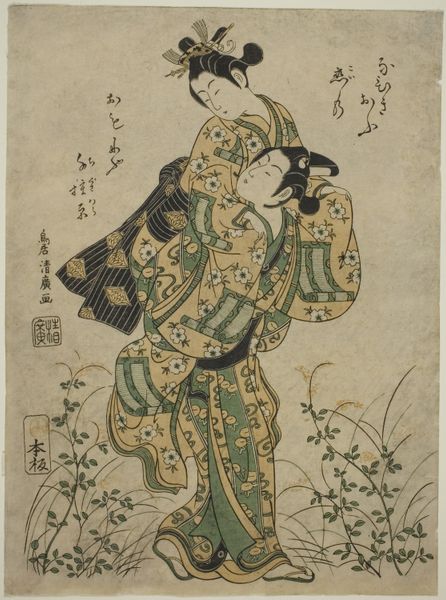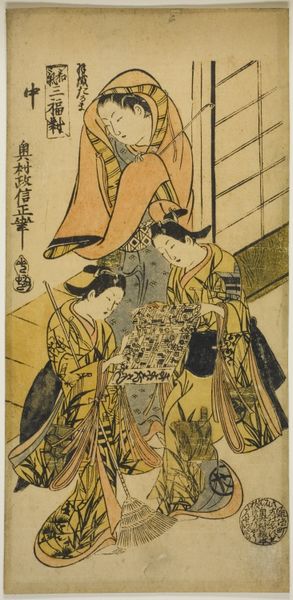
Scene from a Drama: Ichimura Uzaemon as a Samurai 1735 - 1755
0:00
0:00
print, woodblock-print
# print
#
asian-art
#
ukiyo-e
#
japan
#
figuration
#
woodblock-print
#
pen work
#
genre-painting
Dimensions: H. 12 3/8 in. (31.4 cm); W. 6 in. (15.2 cm)
Copyright: Public Domain
Curator: The work before us, entitled "Scene from a Drama: Ichimura Uzaemon as a Samurai", is attributed to Torii Kiyonobu I, crafted sometime between 1735 and 1755. This woodblock print offers a compelling glimpse into Ukiyo-e artistry and is currently housed at the Metropolitan Museum of Art. Editor: It strikes me immediately as poised and subtly melancholic. The vertical composition draws your eye upward, but the weight of the figures anchors it, and there’s a restricted color palette that imparts a certain serenity, doesn't it? Curator: Absolutely. Notice the prominence of line in this print. Kiyonobu's expert handling of line defines form and texture; observe the intricate details in the robes, from the repeating floral motifs to the sharper lines defining the samurai's stance. It is these aesthetic characteristics which lend the artwork its success in composition and dynamism, despite the muted colour scheme. Editor: Agreed, the pattern work is wonderfully complex, creating its own symbolic system. It’s as if their identities are being actively performed, and the context certainly supports this – actors, theater, illusion. It suggests an interesting point of cultural consumption at that time, right? How theatre and the representation of social types helped in negotiating emerging social codes, for both the powerful Samurai class, and their relationship with other levels of the complex, Japanese urban reality. Curator: Precisely. Ukiyo-e prints were pivotal in disseminating images of popular actors, effectively turning them into celebrities. This image does exactly this. Further analysis leads us to see the semiotic significance of this very setting - in this carefully considered, shallow space that amplifies our concentration on the human interplay. Even the window hints at confinement and artifice, amplifying the performative aspect of the characters' identities and of the picture itself. Editor: It feels as if this print becomes an artifact showcasing both aesthetic artistry and an important cultural function within its societal time frame. What I am particularly interested in is its use of the artifice to reinforce power. Curator: Precisely so, seeing the formal elements like line and color intertwined with their societal contexts helps the viewer begin to see the complete historical importance of this fine work. Editor: Yes, truly, by understanding the play of representation on display we glimpse past worlds brought carefully back to life.
Comments
No comments
Be the first to comment and join the conversation on the ultimate creative platform.

